Caring for Your Lutino Cockatiel: The Ultimate Pet Care Tips
Get the ultimate pet care tips for your Lutino Cockatiel - from diet and grooming, to exercise and mental stimulation. Ensure a happy bird!
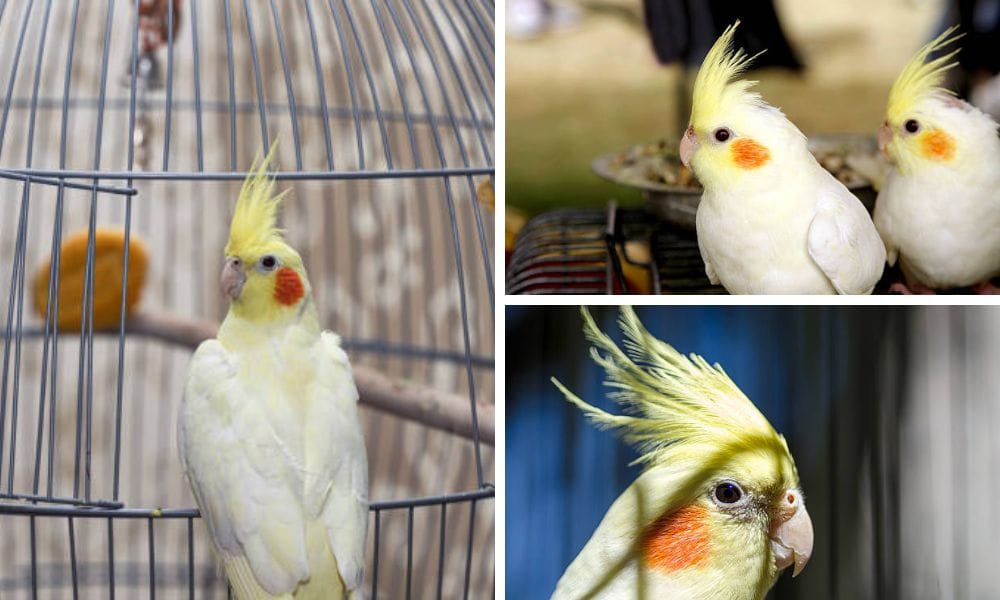
Lutino cockatiels, a stunning variety resulting from the lutino cockatiel mutation, have captivated bird lovers worldwide with their vibrant yellow feathers and contrasting red eyes. As a second cockatiel mutation, the lutino gene has introduced a unique coloration that stands out in the aviculture community. If you’re a first-time bird owner or an experienced avian enthusiast, understanding the specific needs of these birds is crucial for their well-being.
Key Takeaways:
- Lutino cockatiels require specialized care, including a balanced diet, proper cage setup, and regular social interaction.
- Recognizing the signs of a healthy lutino cockatiel can help prevent potential health issues.
- Consistent training and enrichment activities are essential for the mental and emotional health of these intelligent birds.
Understanding the Lutino Mutation
The lutino mutation in cockatiels is a result of a genetic variation that eliminates the grey color in their feathers, resulting in a bird with a beautiful white plumage and yellow shading. Breeding lutino cockatiels can sometimes result in the emergence of an albino cockatiel, highlighting the importance of understanding genetic variations and safe breeding practices. This mutation also affects the eye color, giving them the distinctive red eyes that are often associated with albinism in other species. Cliff Barringer was the first to breed this color mutation successfully, and since then, lutinos have become a popular choice among cockatiel enthusiasts. The lutino cockatiel is also popularly known as the lutino tiel or moonbeam cockatiel because of its beautiful white and yellow plumage.
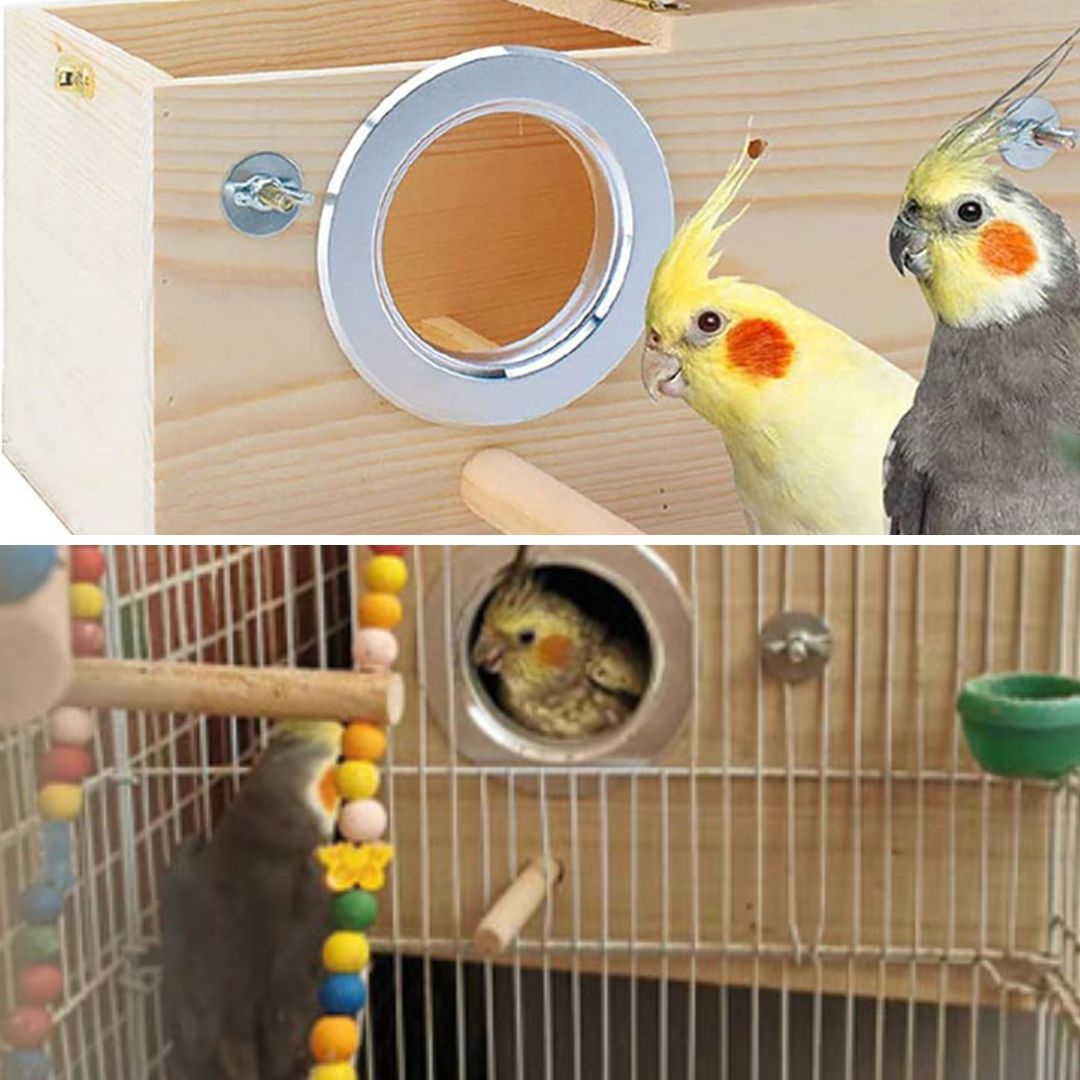
When considering adding a male lutino cockatiel to your family, it’s important to note the difference in behavior and appearance compared to females. Males tend to be more vocal, often whistling and chirping throughout the day. They may also show off their crest and engage in more inquisitive behavior. On the other hand, females are generally quieter and may exhibit more nesting behavior, especially if a nest box is present.
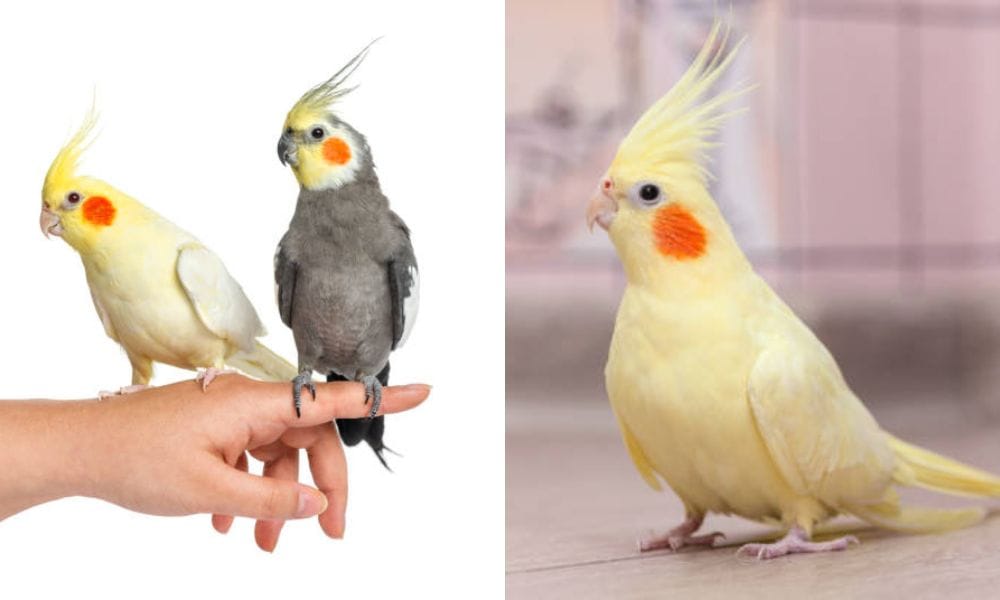
Diet and Nutrition
Feeding your lutino cockatiel a balanced diet is crucial for maintaining their health. A mix of seeds and pellets should be the foundation of their diet, supplemented with a variety of fruits and vegetables. Foods rich in vitamin A, such as carrots and sweet potatoes, are particularly beneficial for lutino cockatiels due to their susceptibility to vitamin A deficiencies. It's also important to provide a source of calcium, such as cuttlebone or mineral blocks, to support healthy bone development.
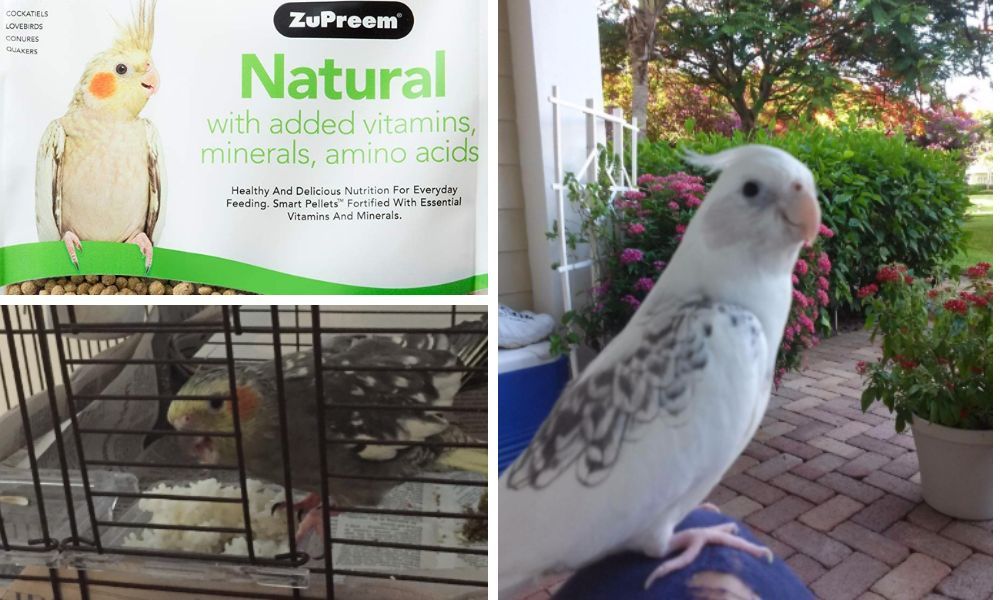
Avoid feeding your lutino cockatiel avocados, chocolate, caffeine, or alcohol, as these can be toxic to birds. Instead, focus on offering a variety of safe, bird-friendly foods that will keep them interested and engaged. Regularly changing up their diet can also help prevent boredom and encourage natural foraging behavior.
Physical Characteristics and Needs
Lutino Cockatiels are a stunning addition to the parrot family, with their unique physical characteristics making them a popular choice among bird enthusiasts. These birds measure around 12 inches (30-33 cm) in length, with an average wingspan of 30-35 cm, making them a relatively small bird. Weighing between 75 to 125 grams, they are light yet robust.
One of the most striking features of lutino cockatiels is their feathers. Their plumage ranges from vibrant yellow to off-white feathers, with some individuals showcasing a more pale yellow or cream-colored appearance. These off-white feathers are a distinctive characteristic of the lutino mutation. Adding to their charm are the stunning orange cheek patches, a key identifying feature that stands out against their lighter feathers.
Their long tail feathers, which make up roughly half the length of their total body, are another beautiful aspect of their appearance. The beak shape of lutino cockatiels is similar to other parrot species, perfectly designed for cracking open seeds and nuts.
When it comes to housing, lutino cockatiels require a spacious cage to thrive. A minimum cage size of 2x3x4 feet is recommended to provide ample room for flying, exercising, and playing. Ensuring they have enough space is crucial for their physical and mental well-being.
Personality and Behavior of Lutino Cockatiels
Lutino Cockatiels are known for their gentle, affectionate, and playful personalities, making them a delightful addition to any family. These social birds thrive on interaction with their owners and other birds, requiring regular socialization to prevent behavioral problems. Their intelligence is another standout trait, as they need mental stimulation to avoid boredom and stress. Providing a variety of toys and activities can help keep their sharp minds engaged.
One of the most endearing aspects of lutino cockatiels is their talkative nature. Many of these birds learn to mimic human speech and other sounds, adding a layer of interaction that many bird owners find charming. Their playful demeanor means they require plenty of exercise and playtime outside of their cage. Engaging them with different toys and activities can help keep them entertained and physically active.
Affectionate by nature, lutino cockatiels love to cuddle and receive attention from their owners. This bond is essential for their emotional health, making them not just pets but true companions.
Grooming and Maintenance
Caring for a lutino cockatiel goes beyond providing food and shelter; grooming is an essential aspect that every first-time bird owner should be well-versed in. Regular grooming not only keeps your feathered friend looking pristine but also promotes good health. Lutino cockatiels, with their stunning white and yellow plumage, can appear dusty due to the powder down they produce. Weekly baths or gentle misting can help manage this, ensuring their feathers remain clean and vibrant. Additionally, nail trimming is necessary to prevent overgrowth, which can lead to mobility issues or discomfort.
When it comes to grooming smaller birds like the lutino cockatiel, it's important to be gentle and patient. Their delicate feathers, especially the rare color mutations such as cinnamon, pied, and pearl, require careful handling to avoid damage. Wing clipping is a controversial topic but can be considered for safety reasons, preventing escape or injury within the home. It's crucial to consult with a vet or a seasoned breeder to understand the best grooming practices for your specific bird, as variations in behavior and temperament can influence the approach.
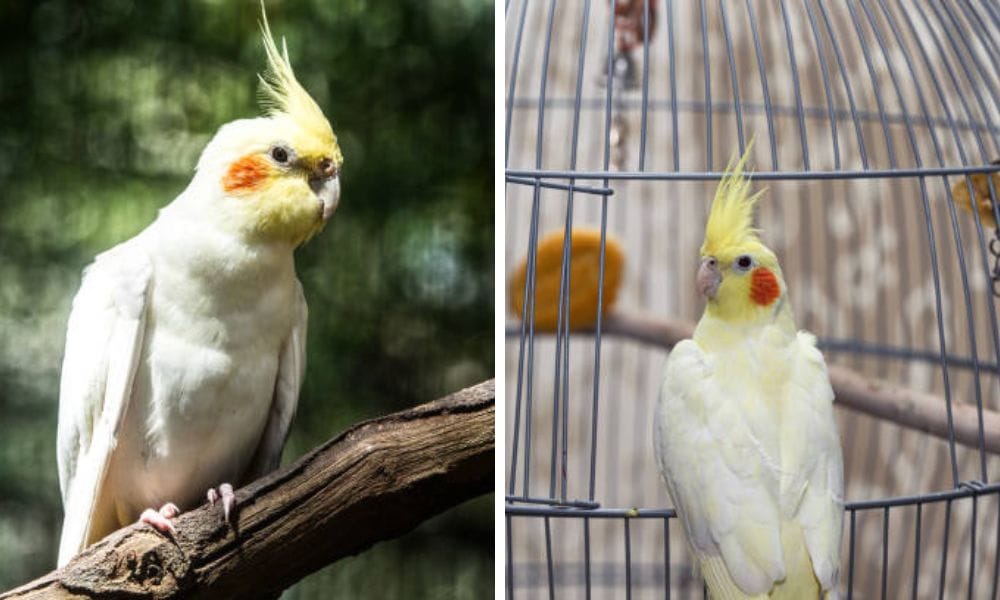
Breeding and Genetic Diversity
Breeding lutino cockatiels can be a fascinating venture, particularly due to the genetic variations such as albino, pied, cinnamon, and pearl. When breeding lutino cockatiels, it's important to observe the distinct traits of baby cockatiels, such as barring on their tails, which aids in visually sexing them. These mutations add a layer of complexity and excitement to breeding programs. For those interested in breeding these birds, understanding the genetics behind the color mutations is crucial. It’s not just about pairing a boy and a girl; responsible breeders aim to maintain genetic diversity and avoid health issues associated with inbreeding. The lutino mutation, being a recessive trait, can produce visually stunning offspring when paired correctly with other mutations like the whiteface or pied.
However, breeding lutino cockatiels, or any birds for that matter, isn’t just about the aesthetics of color mutations. It’s about creating a healthy lineage that can thrive in captivity. The wild ancestors of these birds were caught and bred for their striking appearances, but today’s breeders have the responsibility to prioritize the birds’ well-being. This includes providing a balanced diet rich in fruit and seeds, spacious breeding environments, and regular health checks. By doing so, breeders contribute to the preservation and vitality of these captivating creatures, ensuring they remain a part of our world for generations to come.
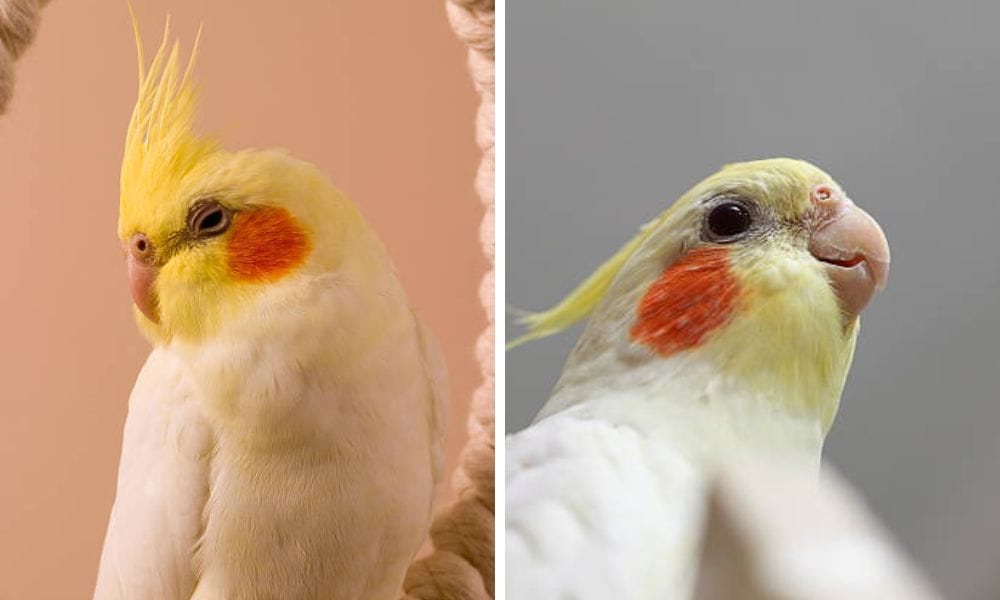
The Ideal Home Environment
Creating the perfect home for your lutino cockatiel starts with choosing the right cage. The cage should be spacious enough for them to spread their wings and move around freely. It should also include perches of varying sizes to promote foot health and prevent sores. Toys are essential for mental stimulation; look for toys that encourage natural behaviors like foraging, shredding, and problem-solving. Bells, ropes, and mirrors are popular choices among lutino cockatiels.
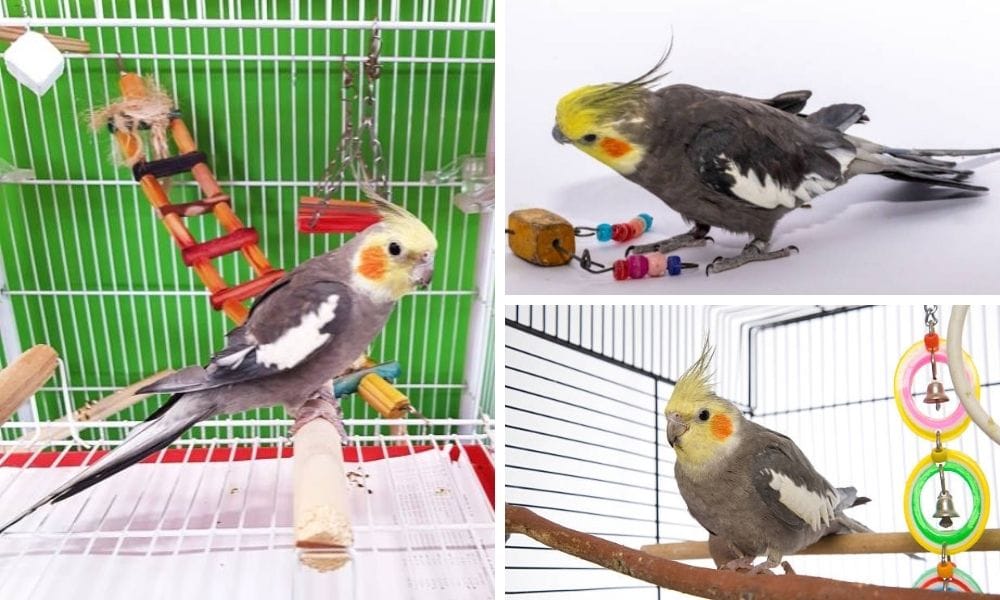
The placement of the cage is equally important. It should be in a location where your bird can watch the family's activities without being in the direct path of drafts or strong sunlight. Lutino cockatiels are social creatures and enjoy being where the action is. However, they also need a quiet place to retreat to when they want to rest. Covering the cage at night can help ensure they get enough sleep
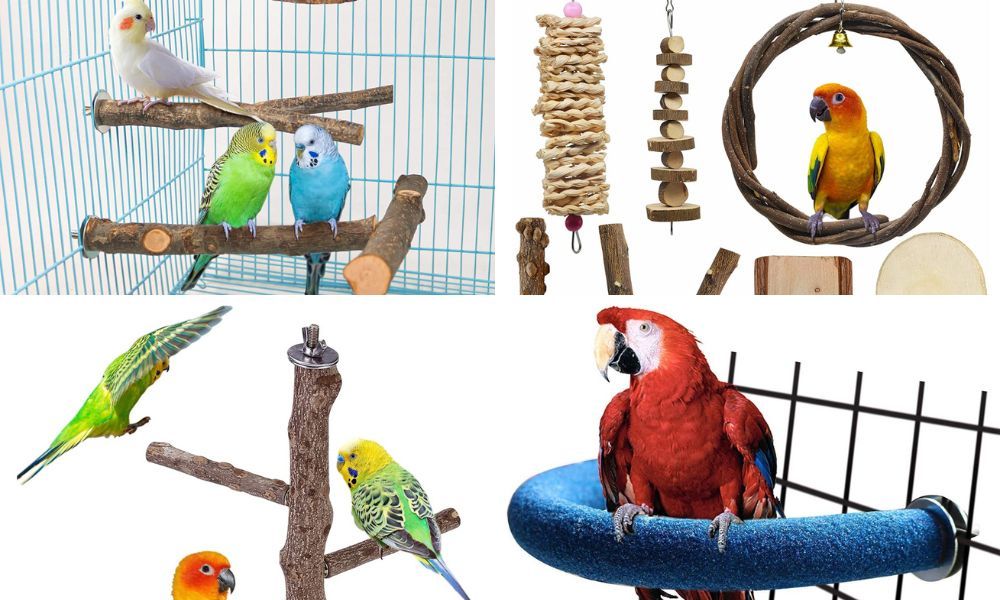
Health and Wellness
Monitoring your lutino cockatiel's health is vital. A healthy bird will have bright, clear eyes, clean feathers, and an active demeanor. Any sign of lethargy, fluffed-up feathers, or changes in droppings could indicate illness and should prompt a visit to an avian veterinarian. Regularly checking for signs of common ailments, such as respiratory issues or feather plucking, can help catch problems early.
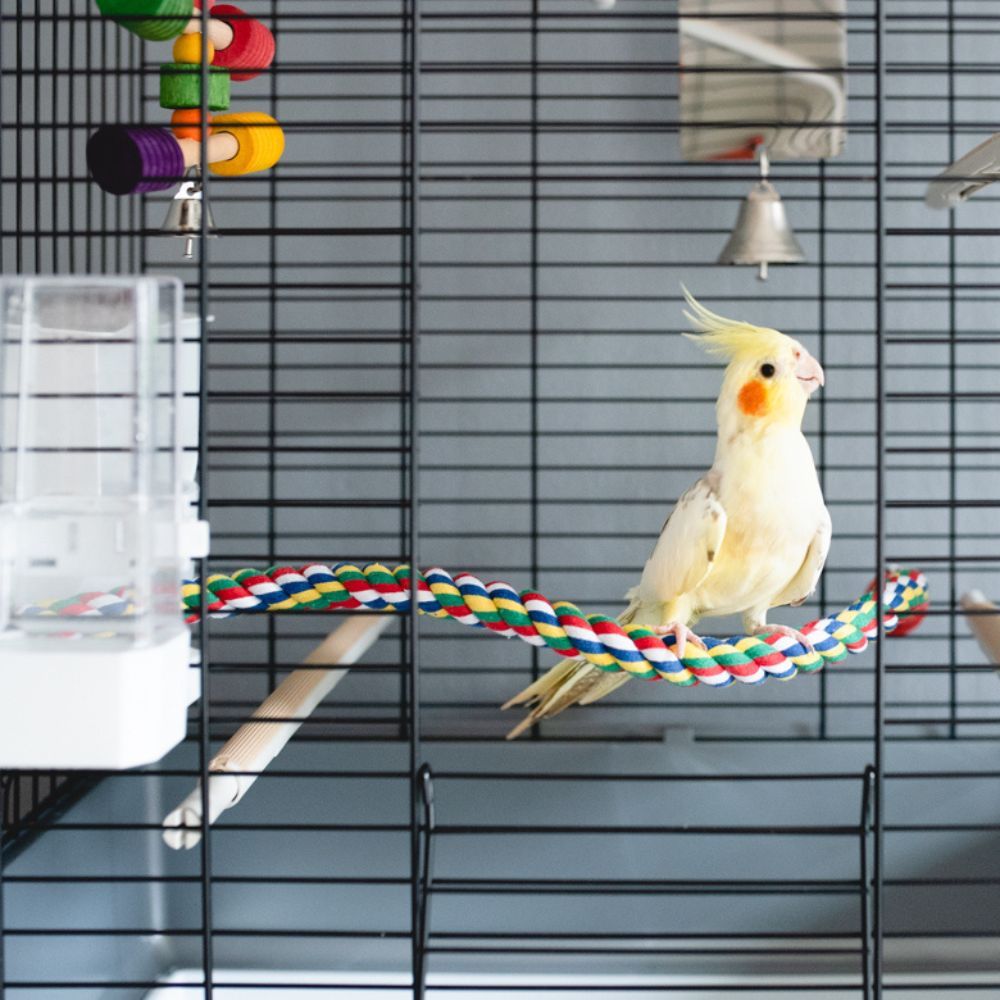
Exercise is also a key component of a healthy lifestyle for lutino cockatiels. Allowing your bird out of the cage to fly in a safe, bird-proofed room will help keep their muscles strong and their mind engaged. Ensure all windows and doors are closed, and remove any potential hazards before letting your bird out to explore.
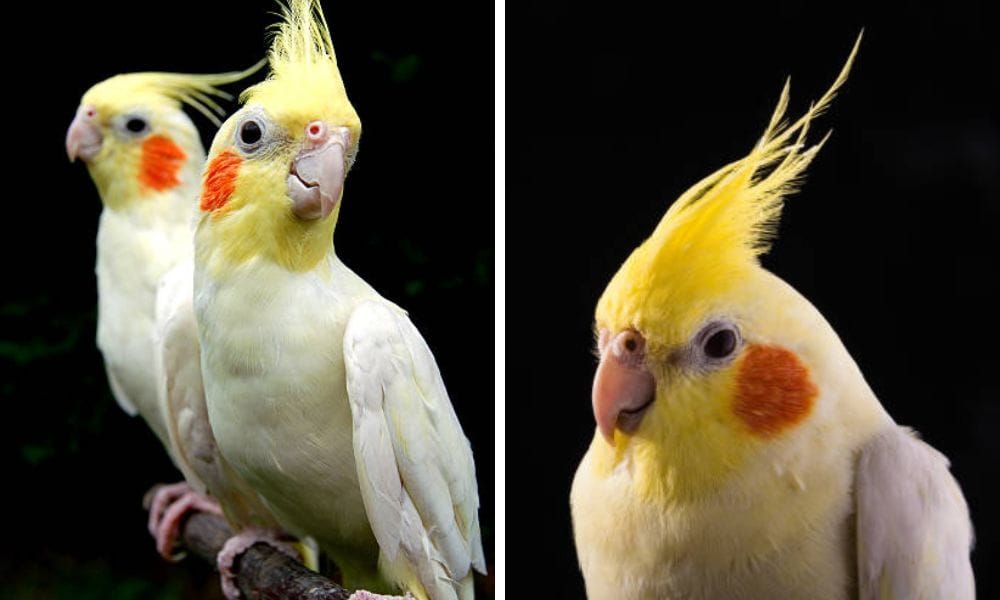
Exercise and Playtime
Lutino Cockatiels require plenty of exercise and playtime to stay happy and healthy. Providing a spacious cage with enough room to fly, exercise, and play is essential. A variety of toys and activities can help keep them engaged and entertained, preventing boredom and promoting mental stimulation.
Spending time with your lutino cockatiel outside of their cage is crucial for their well-being. Engaging in play and interaction helps maintain their mental and physical health. Socializing your lutino cockatiel with other birds and people can also prevent behavioral problems and provide the social interaction they need.
By providing your lutino cockatiel with the physical characteristics and needs, personality and behavior, and exercise and playtime they require, you can help ensure they live a happy and healthy life.
Socialization and Training: Personality of Lutino Cockatiels
Lutino cockatiels are known for their intelligent and inquisitive nature. They thrive on interaction with their owners and can learn a variety of tricks and commands with consistent training. Dedicate time each day to work on simple commands like "step up" or "come here." Positive reinforcement, such as praise or treats, can be very effective in training your bird.
Socialization is also crucial for these birds. Introduce them to different people and environments to help them become well-adjusted pets. If you're considering getting a second cockatiel, remember that while lutino cockatiels can enjoy the company of other parrots, introductions should be done gradually to ensure compatibility.
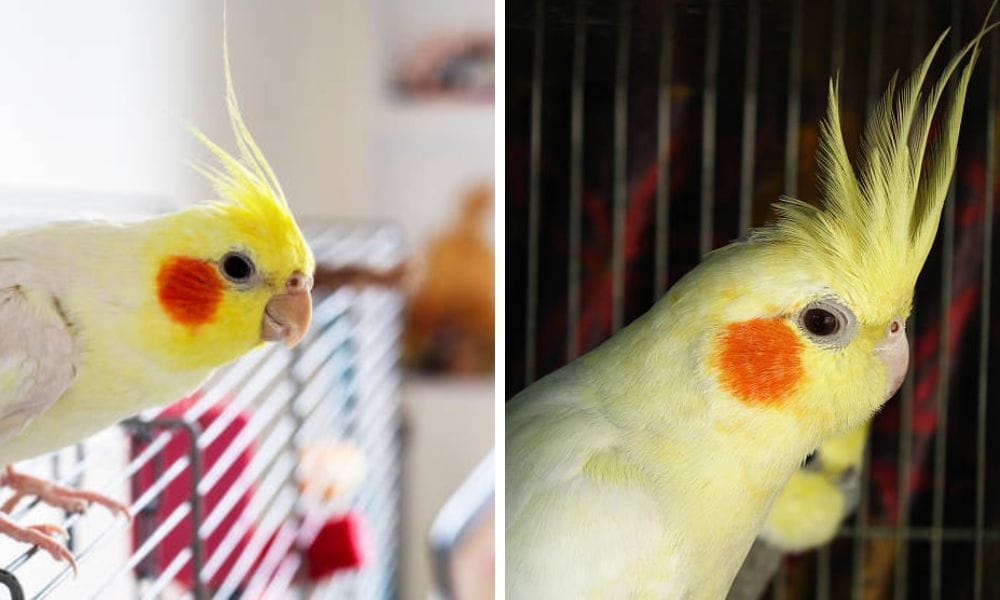
Summary
Caring for a lutino cockatiel involves a commitment to providing a balanced diet, a stimulating environment, and regular social interaction. By understanding the unique aspects of the lutino mutation and the needs of these birds, you can ensure your feathered friend lives a long, happy, and healthy life. Remember to monitor their health, engage in consistent training, and create a loving home for your lutino cockatiel to thrive.
FAQ Section
Q: How can I tell if my lutino cockatiel is male or female? A: Male lutino cockatiels often have brighter yellow coloring and are more vocal, while females may have a more subdued hue and exhibit nesting behavior. However, the most accurate way to determine the sex of your bird is through DNA testing.
Q: What are some common health issues in lutino cockatiels? A: Lutino cockatiels can be prone to vitamin A deficiencies, respiratory infections, and feather plucking. Regular check-ups with an avian vet can help prevent and treat these issues.
Q: Can lutino cockatiels learn to talk? A: Yes, lutino cockatiels are capable of learning to talk and mimic sounds. Males are generally more inclined to talk and whistle, but with patience and consistent training, both males and females can learn to communicate with their owners.

